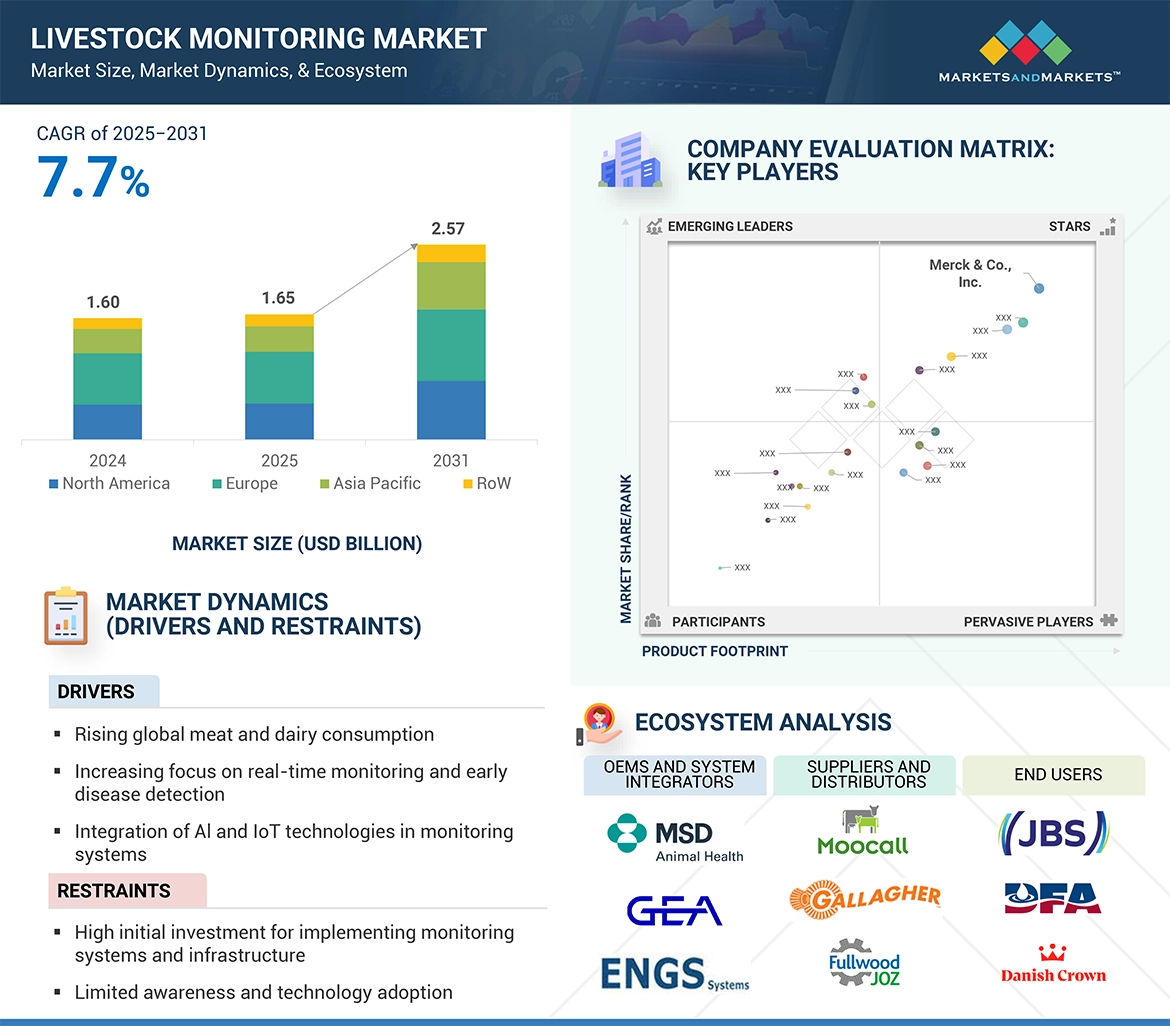Imagine being able to keep a real-time check on the health of your livestock, effortlessly spotting early signs of illness and ensuring they are thriving. You no longer have to rely solely on occasional check-ups or guesswork.
Smart tags are revolutionizing livestock management, making it easier for you to maintain a healthy and productive herd. These innovative devices offer a glimpse into each animal’s well-being, providing vital data at your fingertips. Are you ready to unlock the potential of smart tags for monitoring livestock health?
Dive into this article to discover how you can harness this cutting-edge technology to enhance your livestock management practices and boost your productivity.
Benefits Of Smart Tags
Smart tags have transformed livestock health monitoring. These advanced devices offer numerous benefits. Farmers can now track animal health with precision. This technology enhances productivity and ensures animal welfare. Discover the key benefits of using smart tags for livestock.
Improved Health Monitoring
Smart tags provide real-time health data. Farmers can detect illness early. This allows for quick treatment and recovery. Monitoring reduces the risk of disease spreading. Healthy livestock leads to higher productivity.
Enhanced Productivity
Healthy animals produce more milk and meat. Smart tags help maintain optimal health. They track activity and eating habits. This data boosts farm efficiency. Farmers can make informed decisions to improve output.
Cost-effective Solution
Investing in smart tags saves money long-term. Early disease detection reduces vet bills. Healthy animals require fewer treatments. Improved productivity increases profits. Smart tags are a wise investment for farmers.
Data-driven Insights
Smart tags collect valuable data. Farmers gain insights into animal behavior. This helps optimize feeding and breeding. Data-driven decisions enhance farm management. Smart tags turn information into actionable strategies.
Enhanced Animal Welfare
Smart tags ensure animals are cared for. They alert farmers to health issues. Prompt treatment improves animal welfare. Healthy livestock live longer. Smart tags promote ethical farming practices.

Choosing The Right Smart Tags
Choosing the right smart tags for livestock health monitoring is crucial. Smart tags help in tracking health metrics of livestock efficiently. Selecting the perfect tag ensures accurate data collection and animal well-being.
Understanding Livestock Needs
Different livestock have unique health requirements. Cattle may need tags with temperature sensors. Sheep might need tags that monitor movement patterns. Knowing your livestock’s needs helps in selecting the right technology.
Evaluating Tag Durability
Tags must withstand harsh weather conditions. They should resist water, dust, and impact. Durable tags last longer and reduce replacement costs. Check for materials that ensure longevity.
Consider Battery Life
Batteries should last for months. Frequent replacements can be costly and time-consuming. Opt for tags with long-lasting battery life. This ensures uninterrupted health monitoring.
Assessing Data Accuracy
Accurate data is vital for health decisions. Choose tags that provide precise readings. High-quality sensors improve data reliability. This leads to better health management.
Compatibility With Existing Systems
Ensure tags integrate with current systems. Compatibility avoids additional software costs. Seamless integration simplifies data analysis. This enhances overall farm operations.
Cost Considerations
Set a budget for smart tags. Prices vary based on features and durability. Balance cost with required functionalities. This ensures efficient expenditure without compromising on quality.
Implementing Smart Tags In Farms
Integrating smart tags into farm operations can significantly enhance livestock health monitoring. These tags offer real-time data, helping farmers make informed decisions. By using smart tags, farmers can ensure better health and productivity for their livestock. Implementing these technologies involves several steps, each crucial for effective monitoring.
Understanding The Basics Of Smart Tags
Smart tags are compact devices attached to livestock. They monitor vital signs like temperature and activity levels. These tags transmit data to a central system for analysis. This helps in identifying any health issues early. Understanding how these tags work is the first step to implementation.
Selecting The Right Smart Tags
Not all smart tags are the same. Choose tags that suit your livestock’s needs. Consider factors like range, battery life, and durability. It’s important to select tags that offer accurate data. This ensures the health monitoring system is reliable.
Setting Up The Monitoring System
Once you have the tags, set up the monitoring system. This involves installing software to collect and analyze data. Ensure the system is easy to use. Train your staff on how to operate it effectively. A well-set-up system will provide valuable insights.
Regular Maintenance And Updates
Regularly check the tags and the monitoring system. Ensure they are in good working condition. Update the software to the latest version. This helps in maintaining the accuracy of data. Regular maintenance ensures the longevity of the system.
Integrating Data With Farm Management Practices
Use the data from smart tags to improve farm management. Analyze trends and patterns in the data. Make necessary changes to care routines. This can lead to healthier livestock and better yields. Integrating this data is key to maximizing the benefits.

Analyzing Data For Health Insights
Smart tags on livestock provide a wealth of data. This data can help monitor animal health. Farmers can gather information on movement, temperature, and more.
Analyzing this data offers valuable insights. It helps identify health issues early. This ensures timely intervention and care.
Understanding Patterns In Animal Movement
Movement patterns reveal much about livestock health. Sudden changes might indicate illness. Consistent behavior suggests good health.
Smart tags record each animal’s activity. This helps in spotting unusual behavior quickly. Early detection leads to faster treatment.
Temperature Monitoring For Early Detection
Body temperature is a key health indicator. Smart tags continuously monitor this. Fever or low temperature signals health issues.
Farmers receive alerts for abnormal temperatures. This allows for immediate action. Quick response prevents bigger health problems.
Identifying Stress Factors
Stress affects livestock health significantly. Smart tags track stress-related behavior. Indicators include restlessness or reduced eating.
Recognizing stress factors helps improve animal well-being. Adjustments in environment or care reduce stress.
Utilizing Historical Data Trends
Historical data provides a broader perspective. Smart tags accumulate data over time. This helps spot long-term health trends.
Farmers can make informed decisions with this information. Long-term trends guide better health management strategies.
Implementing Preventative Measures
Data analysis leads to preventative measures. Patterns and trends suggest potential health risks. Proactive steps can then be taken.
This approach minimizes livestock health issues. It enhances overall farm productivity and animal welfare.

Conclusion
Smart tags simplify livestock health monitoring. They provide real-time data on animal well-being. Farmers can track vital signs easily. Early detection of health issues becomes possible. This proactive approach reduces livestock loss. Smart tags help in efficient farm management. Cost savings and increased productivity follow.
Implementing smart tags is a wise investment. They support sustainable farming practices. Embracing technology ensures healthier livestock. Healthier livestock means better yield. Consider smart tags for your livestock today. They offer peace of mind. Your animals deserve the best care.

